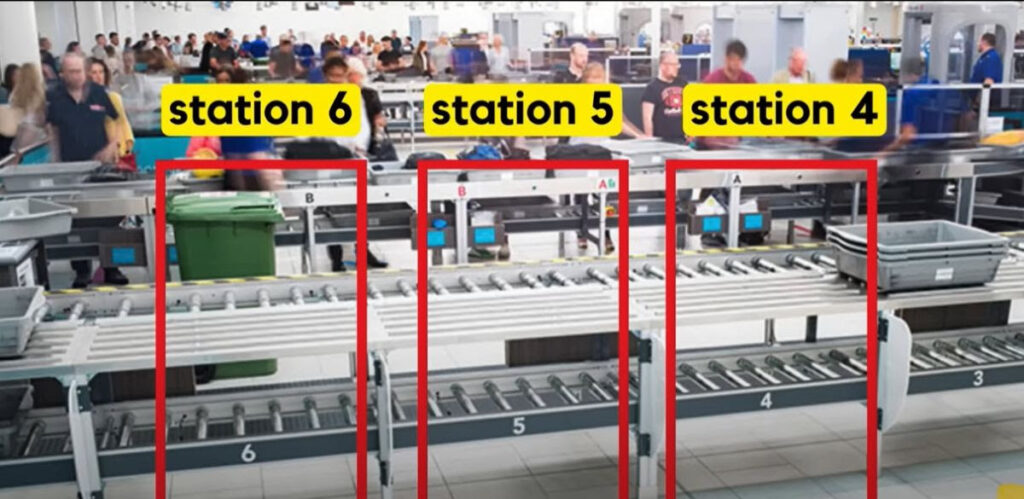Airport Security in Half the Time
11 April 2025
Airport security is getting a major overhaul in 2025 and the changes are catching even the most experienced travelers off guard.
Here are the biggest changes you can expect to encounter on your next trip:
- Automated screening lanes – they’re a game-changer, but super confusing!
- Self-service security – again, it will eventually speed things up as soon as travelers figure them out.
- Digital ID implementation – this one is all about touchless travel, but it’s causing problems.
- Facial recognition – super nerdy and sci-fi but also super efficient, if a little creepy.
- CT scanners – these look like UFO pods but eventually will let you keep your electronics and liquids packed.
In this newsletter, I’ll tell you how to adjust your packing and travel strategies to accommodate these changes. Let’s get started!

Smart Prep Starts with Packing Right
Everything matters when it comes to speeding through airport security lines, from your choice of suitcase to the travel outfit you pick. These steps are important to follow whether you have one of the security pre-screen options like TSA PreCheck or not. That’s because you can’t predict or control whether the pre-screening line will be packed or not.
Quick story: I was recently at my small regional airport, and the pre-screening line was much longer than the regular security line. I nearly freaked because my flight was leaving soon and this particular airport is usually super quick to get through. The reason for the snag? TSA agents were scrutinizing the IDs of everyone in the pre-screened line with a magnification tool! I hopped over to the other line, pulled out my liquids, electronics, etc., and got through in time for my flight because I was prepared to go either way.
- Pack liquids in a clear plastic container and put it in an outside compartment of your suitcase, where it can be easily accessed.
- Store electronics in a dedicated space that’s also easily accessed.
Pro tip: You don’t have to buy a TSA-approved clear bag for your liquids. I find a simple plastic ziploc-style bag works just fine and you can reuse it!
Digital ID Mistakes You Can Avoid
Digital ID is now accepted at some airports, and it should make security screening faster, but for now it’s causing widespread traveler confusion.
Here’s how digital ID works:
- You’ll set up digital ID on your phone and then tap your phone at the security checkpoint.
- The TSA will take a quick photo of your face and match it against your digital ID.
Here’s what you need to understand about digital ID:
- Digital ID does not mean having a photo of your ID on your phone – that won’t work. You have to properly set up the digital ID in Apple Wallet, Google Wallet, or Samsung Wallet.
- Tech issues are a problem with digital ID – if your batter is low, or the bluetooth connection isn’t working, or the TSA system glitches, you’ll need your physical ID to get through security.
- Even when everything works perfectly, a TSA agent may ask to see your physical ID anyway. They have that authority.
The TSA is clear that digital ID augments but does not replace the need for a physical ID. If you don’t have a physical ID, you’re likely not going to travel.
Better Travel Day Strategies
One of the biggest mistakes travelers are making these days is patiently waiting in a single-file security line when there are automated screening lanes available. Because these lanes are new, and they work differently, it’s causing chaos at airports. You read this newsletter, however, so you have the inside track!
Here’s what they look like:

Here’s how the automated screening lanes work: instead of waiting in a single line to unload your belongings to be screened, these new lanes have multiple stations where travelers can spread out. This means that when you see an empty station, you should walk up to it and start putting your things in the bins.
It can feel weird because you now have permission to step around and even pass other travelers who are putting their things in bins rather than waiting for your turn.
Now that you know how to navigate the automated screening lanes, here are the travel day strategies that work best:
- If you have a trusted traveler program like TSA PreCheck, make sure that’s visible on your boarding passes.
- A few hours before your flight, check the TSA app to see the security wait time at your departure airport. This will help you calculate how early you should arrive.
- Make sure you have easy access to your boarding pass – on your phone and printed.
- Store your physical ID in an easily accessible pocket (you can move it back into your wallet after you complete the screening process).
Pro tip: Keep your phone well charged – above 20% if you’re using digital ID or boarding passes.
Special Situations: Family and Medical Equipment
All passengers and their property are required to undergo screening at airport security checkpoints – no exceptions. If you need assistance or have a special situation, talk with the TSA officers about the best way to complete the screening process. Here’s how you can be prepared to make the screening process go as smoothly as possible.
When traveling with children:
- Children under 12 can use the TSA PreCheck lanes when traveling with an enrolled adult.
- Infants can be carried through metal detectors, but strollers and car seats must be screened. This means you can’t roll the baby through security
- Pack breast milk (counts as a liquid) in an easily accessible bag. It’s exempt from the liquid restrictions but still requires screening.
- Make sure the kids have minimal metal accessories or pocketed toys that could set off alarms.
When traveling with medical equipment:
- Notify the TSA officer about the equipment before screening (in some cases, they’ll step you through a different lane).
- Have your medical ID or doctor’s note handy in case you need to explain your condition.
- Insulin pumps and other medical devices can stay connected during screening, and you can request a private screening of medical equipment.
When traveling with non-visible disabilities and/or medical conditions:
Inform the TSA officer if you or a traveling companion has a non-visible disability or medical condition such as Alzheimer’s, autism spectrum disorder, or dementia, for example, so they can be screened without being separated from their traveling companion.
Damian Tysdal is the founder of CoverTrip, and is a licensed agent for travel insurance (MA 1883287). He believes travel insurance should be easier to understand, and started the first travel insurance blog in 2006.
